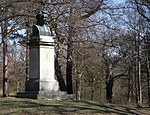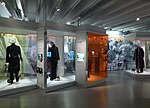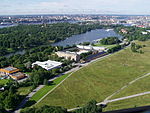Djurgården

Djurgården (pronounced [ˈjʉ̌ː(r)ɡɔɳ] or [ˈjʉ̂ːrˌɡoːɖɛn] (listen)) or, more officially, Kungliga Djurgården (Swedish for 'The [Royal] Game Park'), is an island in central Stockholm, Sweden. Djurgården is home to historical buildings and monuments, museums, galleries, the amusement park Gröna Lund, the open-air museum Skansen, the small residential area Djurgårdsstaden, yacht harbours, and extensive stretches of forest and meadows. It is one of the Stockholmers' favorite recreation areas and tourist destinations alike, attracting over 10 million visitors per year, of which some 5 million come to visit the museums and amusement park. The island belongs to the National City park founded in 1995. Since the 15th century the Swedish monarch has owned or held the right of disposition of Royal Djurgården. Today, this right is exercised by the Royal Djurgården Administration which is a part of the Royal Court of Sweden. A larger area of the city, separated from Djurgården proper by Djurgårdsbrunnsviken is Norra Djurgården (Northern Djurgården), including Gärdet.
Excerpt from the Wikipedia article Djurgården (License: CC BY-SA 3.0, Authors, Images).Djurgården
Valmundsvägen, Stockholm Djurgården (Östermalms stadsdelsområde)
Geographical coordinates (GPS) Address Nearby Places Show on map
Geographical coordinates (GPS)
| Latitude | Longitude |
|---|---|
| N 59.325 ° | E 18.116666666667 ° |
Address
Gossen med fisken
Valmundsvägen
115 21 Stockholm, Djurgården (Östermalms stadsdelsområde)
Sweden
Open on Google Maps










